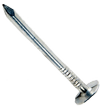Sharp Flat Rule # b
The musical notes have the letters, ABCDEFG. Between these letters are more notes, so we must add sharps or flats to name them.
A song may be in different Keys. The Key indicates what notes are sharp or flat. The Key's name is based on the first note of a song's Major Scale, or its Root (the base note from which the subsequent sounds branch). If a song is based around the 'A' note, then 'A' is our Root. (We're using Major Keys.)
A B C# D E F# G# A
The above scale is the A Major scale.
Listen to the Major Scale
Scales are note patterns within a single Key, using letters, sequentially.
These notes are in a song written in the Key of 'A'. There are 3 sharps, F# C# G#. The note, 'A' is our Root, or 1st note.
Since the A Major scale has 3 sharps only, then these 3 sharp notes must make the correct sound for a major scale. How can we find the correct number of sharps for any major scale, starting from any root?
Sharps
We must order the sharps to any major scale with the following pattern:
F C G D A E B
With this Order, we can find the Key for any major scale.
- Use the Root note of a Major scale. In this case, 'A' is our Root.
- Make the Root a half step lower. One half step lower than 'A' is 'G#' .
- Use the order of the sharps to count up to 'G#' .

sharp
This is done with FCGDAEB. Start from the first letter, 'F', and count up to G. (Remember the order is all sharps.) FCG is the end of our counting, because 'G#' is the last sharp in that order.
So, F# C# G#, 3 sharps, are found in the Key of A Major. The A Major Scale has these 3 sharps, also. Scales are note patterns within a single Key, using letters, sequentially.
The above rules, summarized:
- A = root
- G# = half step below root
- Count Order of Sharps to G#
- F C G sharps
We now know the Key of A Major with the Root 'A', has 3 notes, FCG, all sharp. Therefore, the scale of A Major is:
"...the Root note is the name of the Key, and the Order of Sharps or Flats are tools to find the number of sharps or flats, for that Key."
Notice that the major scale sharps are not in the same letter sequence as the Order of Sharps, FCGDAEB. This is because a scale has a sound or tone, and the Order of Sharps is only a step counting tool to find the Key.
To review the sharps rule:
- Take Root (starting) note down a half step
- Use Order of Sharps (FCGDAEB) to begin counting
- Count up to the letter that is a half step below the Root
- Use the root and sharps for playing Key notes in the scale.
Flats
Opposite sharps, a song can have only flats. For example, when playing a song in the Major Key of Eb, the scale notes in that Key are:
Eb F G Ab Bb C D Eb
This scale has 3 flats (BEA flats). The Key for Eb uses the Order of Flats for finding the number of flats. Here is the Order of Flats:
B E A D G C F

flat
This order is a tool, to only count the number of flats, in a Major flat Key. To find the number of flats in the Key of Eb, we use the Root, Eb, as the second to last flat.
Count up to that note in the Order of Flats: BE, then add the last flat to complete the number: BEA flats. So, 3 flats are in the Key of Eb Major, which has these scale notes:
Notice these flats are not in the same sequence as the Order of Flats, because we are following the major scale step pattern, WWHWWWH. This pattern makes a sound, but use the Order of Flats as a counting tool only to find the number of flats.
To review the flats rule:
- Use the Root (starting note) as the second to last flat.
- Count up to the last flat (one flat past the second to last), in the Order of Flats (BEADGCF).
- Stopping at the scale's root note plus one more flat, use only those flats for the Key notes in the scale.
As a reminder, the Root note is the name of the Key, and the Order of Sharps or Flats are tools to find the number of sharps or flats, for that Key.
- Sharps use a half step below the Root, to find the number of Sharps.
- Flats use the Root as the second to last flat, to find the number of Flats.
Here is their Order:
F C G D A E B (sharps)
B E A D G C F (flats)
The flats are the sharps' order backwards, or reversed.
A phrase to remember the Sharps' order is:
Fat Cats Go Down Alleys Eating Birds
To remember the Flats' order, use:
BEAD -GCF
Again, Major scales have their own order of between steps:
WWHWWWH
2wholes, 1half, 3wholes, 1half steps
These steps distance the tones apart, to sound like a Major Scale pattern. You can start on any note (root), and use this pattern of steps between each note.
The half steps will fall on the 3rd and 7th notes of a Major scale. Remember that B to C, and E to F are half steps.
C w D w E h F w G w A w B h C
F w G w A h Bb w C w D w E h F
Yes, these methods to make a Major Key are difficult, but remember what a scale sounds like. You can usually get the correct note if you recall the sound.
Read the Intro to Sharps for a more basic concept.
Recommended reading: Sharps and Flats Order
We can make a major scale, now let's make a chord! >>
